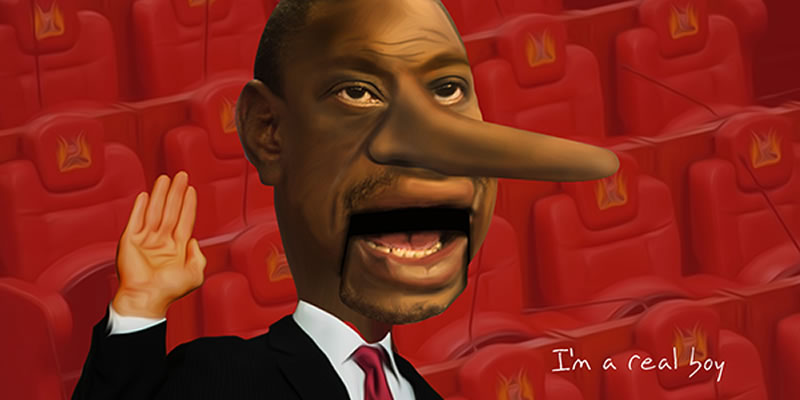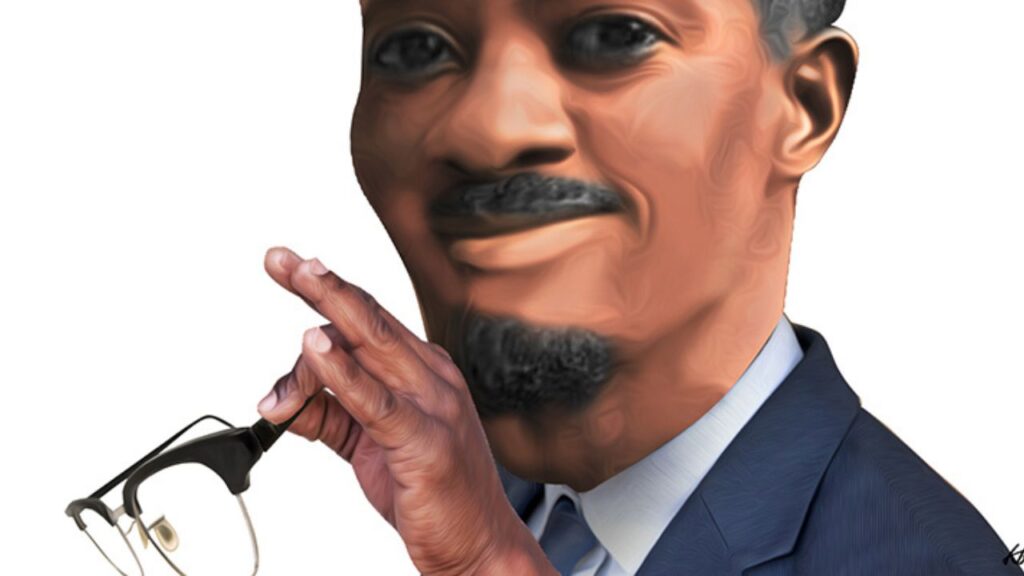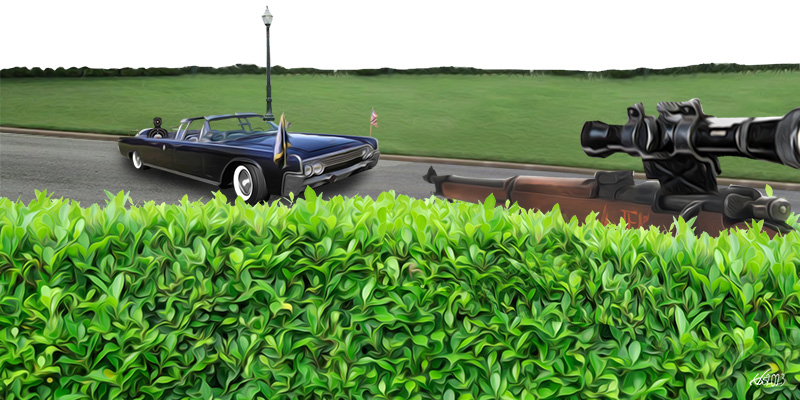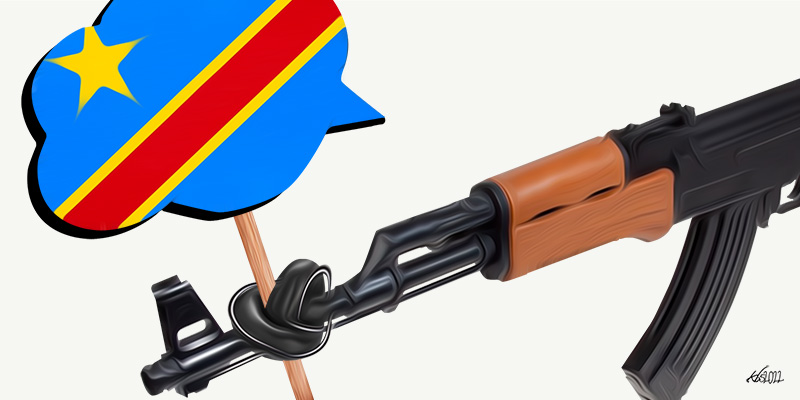President Uhuru Kenyatta has the tendency of issuing orders and declarations. These directives, which in State House jargon are often referred to as executive orders, are issued from all manner of venues and events but commonly from State House, when he is delivering his speeches during national holidays and often during the State of the Nation address given in March every year in parliament.
The language the president uses when issuing these orders is deliberate. It is one of “I have directed”, “I have instructed” or “I have ordered”. That choice of language communicates a number of things. One, that the president has the legal authority and power to make the order and two, that those directed to undertake the action must do so. The orders also take various forms. Some are formally written, but some are just that – verbal orders made during a televised address or at a moment of excitement during a political rally.
Situating executive orders in history
In Kenya, executive orders are not new. President Daniel arap Moi was notorious for issuing executive orders. In fact, his executive orders were often referred to as “roadside declarations” because they were issued randomly and unpredictably, often by the roadside when he stopped to greet people. Often he would stop to “buy” vegetables by the roadside and would demand that a government officer or a state agency undertake a certain action. He seemed not to care about the implications, often issuing orders which sometimes would require billions of shillings to implement. The orders were issued with no prior government planning. Some would be petty or vindictive, including ordering the detention of those who questioned his regime. But regardless of how petty or costly his orders were, he expected nothing less than full implementation of them. Luckily, Moi ruled at a different time, when it was hard to distinguish between him and the law. Kenya law was what Moi said the law was and most of those who thought differently either ended up in detention or with their collar bones broken by the ruthless anti-riot police.
The language the president uses when issuing these orders is deliberate. It is one of “I have directed”, “I have instructed” or “I have ordered”. That choice of language communicates a number of things. One, that the president has the legal authority and power to make the order and two, that those directed to undertake the action must do so.
On the global scene, even though past American presidents have issued executive orders, Donald Trump is perhaps the first US president to be most associated with popularising executive orders. On the day he was sworn into office, he wore an adolescent grin as he signed away tens of executive orders. The excitement he felt at finally having the power to use the presidential pen was palpable. As fate would have it, he would get a rude awakening later when a number of his key executive orders were challenged, including those imposing a travel ban on persons from a number of select Muslim-dominated countries.
Uhuru’s orders
So what are Uhuru’s executive orders? There are countless but a few examples will suffice here. Early this year, Uhuru issued an executive order creating the Nairobi Metropolitan Area Transport Authority (NAMATA), a multi-billion-shilling agency that is intended to integrate the transport of four counties – Nairobi, Machakos, Kajiado and Kiambu – in order to ease traffic and bring order to public transport in the Nairobi metropolitan area. In his 2015 State of the Nation address, he had issued an executive order creating a ten-billion Restorative Justice Fund, which was meant to compensate victims of historical state injustices, including the victims of the 2007/8 post-election violence. In the same speech, he ordered the Ethics and Anti-Corruption Commission and the Director of Public Prosecutions to finalise the processing of pending anti-corruption cases within sixty days. Earlier he had issued Executive Order Number Six (6) on Ethics and Integrity in the Public Service with directives to various state organs on what they must do to fight corruption.
What the constitution says
But are the President’s executive orders legal or constitutional?
Because of Kenya’s history of misrule – during the Jomo Kenyatta, Daniel arap Moi and Mwai Kibaki regimes – Kenyans learned that it was a fundamental mistake to concentrate power in one individual or institution.
Kenya has one of the most progressive and transformative constitutions in the world. The constitution is value-laden, with some of the critical values being the rule of law, good governance, separation of powers, transparency and accountability and respect for human rights. Two additional values are devolution of power and participation of the people.
Because of Kenya’s history of misrule – during the Jomo Kenyatta, Daniel arap Moi and Mwai Kibaki regimes – Kenyans learned that it was a fundamental mistake to concentrate power in one individual or institution. Though the independence constitution had modestly dispersed power, including by creating regional governments, Uhuru Kenyatta’s father, Jomo Kenyatta, was quick to weaken the institutions of state and concentrate power around him. The president, not even the presidency, became synonymous with the law. Moi would perfect this, and although Kibaki was slightly shy about it, he never failed to use this privilege, especially whenever it suited him personally.
Because of this sad history of autocratic domination, when Kenyans promulgated a new constitution in 2010, they dispersed state power as much as possible, first, vertically by deconcentrating power through devolution and ring-fencing the functions of each level of government, and second, by dispersing power horizontally by entrenching a strong separation-of-powers regime between the executive and the legislature and by structurally providing for one of the most powerful and independent judiciaries in the world.
The net effect of all this is that, constitutionally, we have a relatively weak national executive – in fact, very weak by the 1969 constitution’s standards. Note this: the constitution created a president who is both the head of national government (the national executive) and the head of state. The titles are colourful, but constitutionally the institution of the presidency does not have much power. This is for three reasons.
First, the constitution created many safeguards to check the president’s power. For example, hardly any of the president’s appointees (except his personal staff) can take office without parliamentary vetting. Even when – as has been with the current parliament – parliament fails to appreciate the enormity of its power of oversighting the executive and allows mediocre appointees by the president to take office, the courts can constitutionally intervene and can even invalidate the president’s appointments.
Second, the constitution places little trust in the presidency; this is evident in Article 135, which requires a “decision of the President in the performance of any function of the President under this Constitution shall be in writing and shall bear the seal and signature of the President.” The effect of Article 135 is that any decision of the president that is not in writing is illegal.
The president cannot take over a function constitutionally given to the counties and direct them on what to do or how to do it. If he does this, he is usurping the powers of the counties, which is illegal.
Finally, the president cannot tell anything to most of the critical state organs. On this, for example, the president has no power over county governments, because, constitutionally, the heads of those governments are county governors, who through ingenious but important constitutional provisions, are co-equals of the president. Additionally, constitutionally, the president cannot direct state institutions, such as the Office of the Director of Public Prosecutions (DPP) and independent commissions, such as the Ethics and Anti-Corruption Commission (EACC) or even the Office of the Inspector General of Police. In other words, the president is more a head of state (which constitutionally is more of a ceremonial office) than the head of government.
Illegal executive orders?
So how legal are executive orders? The quick answer is that they are mostly illegal. Why?
It is easier to answer the why question by looking at the various executive orders I outlined earlier.
Let’s start with NAMATA. The illegalities here are numerous. First, local transport under the constitution is a function of counties. The president cannot take over a function constitutionally given to the counties and direct them on what to do or how to do it. If he does this, he is usurping the powers of the counties, which is illegal. Not that the constitution excludes the president from having a say on an institution like NAMATA. No. He can, as a citizen, participate in demanding the creation of such an organ to address what is obviously a genuine and critical need. He can also, as president, through constitutionally created intergovernmental mechanisms, find ways to work with the counties involved to develop such an organ. He could also, using his clout as the head of national government, request parliament to grant conditional grants to the counties to develop such a facility.
Interestingly, some of the institutions targeted by the president are the very independent commissions and offices that are supposed to be insulated from state or presidential interference.
Second, NAMATA becomes problematic when it is created through an executive order. This problem also arises in regard to the executive order creating a Restorative Justice Fund. Both require significant financial outlay (at least Ksh10 billion for the Restorative Justice Fund, and more in the case of NAMATA). The institutions that have the power to allocate state revenue are parliament and county assemblies, not the presidency. Parliament and county assemblies were not involved, at least initially, either in the conceptualisation of the idea or in the issuance of the executive orders. Hence later attempts to create a legislative framework to facilitate these efforts are nothing but sanitising an illegality. And a sanitised illegality still remains an illegality.
What of the orders to the EACC and DPP to process corruption cases within sixty days? Also illegal. The constitution says both of these institutions are independent – in fact, the constitution refers to them as independent offices and commissions. This was done deliberately. Kenyans knew that public officers and state institutions have tendencies to violate the law. They needed strong watchdogs to check the excesses of public officers and state institutions. They also had to insulate these watchdogs from the potentially offending public institutions and officers, including the president. One such insulation was to require that the independent commissions and offices undertake their mandate independently and without being directed by anyone external to them. When the president issues directives to these independent bodies, he is compromising their independence and violating the constitution.
Creating an image of an all-powerful office, which is communicated by the choice of words that commonly feature in the president’s speeches, is an act of executive brainwashing on citizens. The intention is to create a state of mind among the public that the president can ask for anything to be done and it must and will be done.
Interestingly, some of the institutions targeted by the president are the very independent commissions and offices that are supposed to be insulated from state or presidential interference. Unfortunately, some of these institutions have not responded adequately to illegal executive orders. In his 2015 State of the Nation address, the president issued investigatory and prosecutorial directives to the EACC and the DPP; both frantically tried to implement the executive order. In fact, with the exception of the Office of the Auditor General (and here it is more the Auditor General himself than the office), hardly any of the commissions and independent offices can be regarded as having the spine to fight the illegality of executive orders. The National Police Service Commission (NPSC), despite its strategic constitutional mandate of enforcing the rule of law, was perhaps the first to buckle under the weight of the executive’s demands. Other commissions are similarly eager to turn a blind eye on the executive’s transgressions.
Executive brainwashing
The 2010 constitution does not support an all-powerful president. Presidential orders or directives are not supported by the constitution, which is more concerned with the rule of law, good governance, inclusiveness in decision-making and dispersal of state power.
When you read the State of the Nation address or any address by the president, the impression you are left with is of a very powerful office. The terms, “direct”, “order”, “require”, litter such statements. Creating an image of an all-powerful office, which is communicated by the choice of words that commonly feature in the president’s speeches, is an act of executive brainwashing on citizens. The intention is to create a state of mind among the public that the president can ask for anything to be done and it must and will be done. Jomo Kenyatta and Daniel arap Moi secured their dictatorial regimes through this kind of psychological sabotage. Unfortunately, Uhuru seems to be hanging on to a dwindling warmth of history, a history long banished by the constitution.








